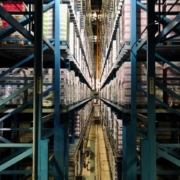Supply Chain Management is outdated.
Traditional Supply Chain Management is under severe pressure. The economic crisis is causing problems in the consumer market and on the other hand, there are big problems with the acquisition of raw and semi-finished products. The shift to a demand chain is more than ever urgent.
The markets are changing rapidly. The Asian tigers continue to outperform traditional countries. But also regions such as South America begin to stir. On the other hand, the pressure on margins continues which urges the need for cost reduction in the supply chain. Consumers are becoming more volatile, often driven by the huge range of different products. This allows the product life cycle is becoming shorter but, making the payback period of a product is becoming increasingly difficult.
These challenges are forcing companies to re-organize their supply chain from end-to-end. The SCOR concept is being used to synchronize planning, integration of production and sourcing of funds. On the consumer side guarding order timeliness and completeness, important not to lose the customer. Yet you still see much stock in the supply chain, long lead times with increasing risks and rising labour costs. Traditionally, companies have chosen than for the functional optimization of their organization, outsource what is not directly as a core competency and a great focus on customer service levels.
But with the current requirements of the market is a traditional supply chain optimization no longer sufficient. The organizational strategy requires a new business model that is focused on an On-Demand and Omni Chain.
An On Demand Omni Chain [ODOC] focuses on the chain flexibility to respond quickly to changing needs and to monitor the short life cycles of products. The fluctuating volume demand requires that brands lifetime gets shorter [time to market] to avoid obsolete stock and products. During In quick changes or interruptions in the Chain due to external factors, such as disasters, the Demand Chain needs to be resilient to restore the supply, without excessive costs. That means your entire supply chain must not only comply with Operational Excellence, but should also achieve integration as well in horizontal as on external levels. Even working with your main competitors when it comes for example to Central Warehousing and value added logistics, is an important way to keep your costs under control.
But one of the key drivers is the collaboration with your end customers. It is your main source of information when it comes to changes in demand and trends. On-line social collaboration with your customers reinforces ties but also provides you with continuous information on possible changes, which you can then feed back through the entire chain. This means that transparency is the best in the entire chain in order to be sensitive to any change. Such breakthrough will be only successful if, at boardroom levels and with the various partners in the chain, demand chain management has maximum focus.










In the Supply Chain Management industry, one needs to be up to date with modern technology in order to keep ahead of the competition. You have posted a very unique article on why supply chain is outdated. I will definitely update my supply chain management system based on your given tips. Thank you for posting such an informative post. I really gained a lot from your post.